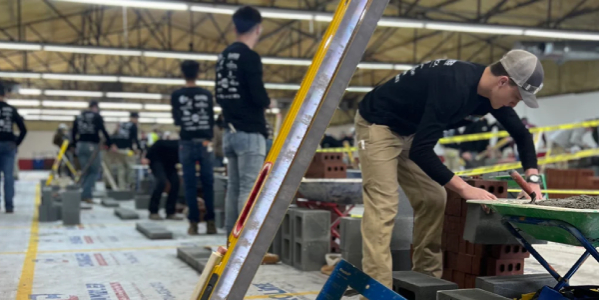How to Start (or Grow) a True Service Department (Part 3 & 4)

Building a service department requires “selling” services, being customer focused and staffing organically.
By Greg Hayne, Roof Management.
Part 3 – “10 easy steps”…NOT!
When contractors approach us to talk about how to grow their service departments we usually start by reviewing with them the information we presented in Parts 1 and 2 of this article series, because if you don’t get that right, most of the other stuff won’t work either. But just how do you grow your department?
Think of it this way, everybody starts with just one truck. (Actually, everybody starts with no trucks, but until you have a dedicated service truck you really don’t have a department). With one truck you can’t afford a full-blown service staff. So, what can you do?
First, the roles we talked about in Part 2 of this article series (the Service Superintendent and the Service Coordinator) are going to need to be adopted by someone already in the company. Perhaps your receptionist catches the calls, your accountant handles the billing and your production superintendent handles the scheduling and technical support for the repair crew(s).
Then you can work through the following three steps:
• Step 1: Understand, that everything starts with a sale. I am not suggesting that you have to go out and hire a service sales person, but somebody in your organization is going to have to fill that role as part of what they do or your growth will be at a crawl at best and more likely you won’t grow at all. Go sell something!
• Step 2: Figure out who is going to go install what you sold! If you are a viable commercial roofing contractor who has been around for a few years, you have people that have the necessary skills to do the work. Have them go do it!
• Step 3: Go sell more work! Rinse and repeat.
If Steps 1-3 are working well, then at some point it will make sense to bring somebody in more formally to manage your growing service department. And, based on Part 2, who should that be? My point in all of this is for you to begin to clearly understand that building a service department requires “selling” services, being customer focused and staffing organically. What works for you will not work for your competitor down the street and vice versa. There is no magic bullet. (Well, actually there kind of is a magic bullet, and it was explained very clearly in paragraphs 4 and 5 of Part 1.)
So, what we have done in these first three parts is try to address the common missteps we see and also help you understand the dynamics of what to expect. Next part we are going to address a very important question. “Just what is great service?”
Part 4 – Just what is “great service?”
In the first three parts of this series of articles we have been talking about some of the mistakes we see contractors make when they are trying to grow their service departments, mistakes that hold them back. We are going to shift a bit now and talk about what “Great Service” actually looks like.
There are no great service departments in this country who are not outstanding communicators. There are no service departments in this country who are great at communicating and also not great service departments. Service is all about communication. We have already discussed the need for talented, customer-oriented employees to be in the key roles within your service department. These individuals need to be responsive and empathetic. “Service” is about doing what is in the best interest of your customer, not what is most convenient, efficient, or easy for you. This is a mindset that is the opposite of what you normally bring to doing production work. Think about that! The skills and talents you have that make you really good at production work will be liabilities and limitations in the service department.
Let me give you a true story of how a contractor did something that was convenient, efficient, and easy for him and got him fired. A few years ago, in my role as roofing consultant, we had a client that had five shopping centers within this contractor’s geographic service area. We reported a leak right before Christmas and heard nothing. We left voice mails, sent emails, nothing. By a fluke, we discovered that the contractor had decided to give everybody a week off for the holidays. Nobody was “on call.” There was no notification. They just took a week off! So, we found somebody else to take care of the leak and they became our new contractor for repairs for all five shopping centers. If they had notified us the week before that this was going to happen, it would have saved my client (and me) a bunch of hassle. Let me be clear, it wasn’t only their decision to take a week off that got them fired, it was because they did not understand the value of communicating that decision to us. That they also did not have in place any kind of emergency leak response plan also indicated that they put their company’s convenience ahead of serving their customers.
Let me give you a couple of simple communication steps that will make a huge difference and you can start implementing them today. (By the way, this applies to everybody in your company, including you).
1. When you get an email, reply to it immediately. If you have time to read it, you have time to reply. “Got it.” “Will get back to you about this by the end of the day.” “You will have it by the end of the week.” Nothing elaborate, just let your customer know they were heard.
2. Return all phone calls by the end of the day, before you leave the office. Even if it means leaving a voice mail. “Hi, just wanted to let you know I got your message and we are on it.” “Hi, sorry I missed you. I did get your message and will try and reach you again tomorrow morning.”
Both of these practices are the essence of good communication and will actually save you time in the long run by letting the person who reached out to you know that you did get their message. Silence causes confusion. “Did he get my message?” “I wonder if he is on vacation and I need to call somebody else?” “I might as well call another company too, because…”
Next month we will discuss another key communication best practice that isn’t so obvious but is equally important.
Click here to read Part 1 and 2.
Learn more about the MRCA in their RoofersCoffeeShop® Directory.
Greg Hayne is owner of the Hayne Coaching Group. Greg helps contractors find and implement better, smarter, more innovative ways to work. His proven Creating Great Service training, support and implementation program helps commercial roofers grow their service departments. His ESE Peer Groups bring non-competing roofers together multiple times a year to share best practices, solve common problems and tip the competitive landscape in their favor in a big way! Greg is also an EOS implementor, helping select contractors get the most from their EOS/Traction experience.
Source: Midwest Roofer






















Comments
Leave a Reply
Have an account? Login to leave a comment!
Sign In